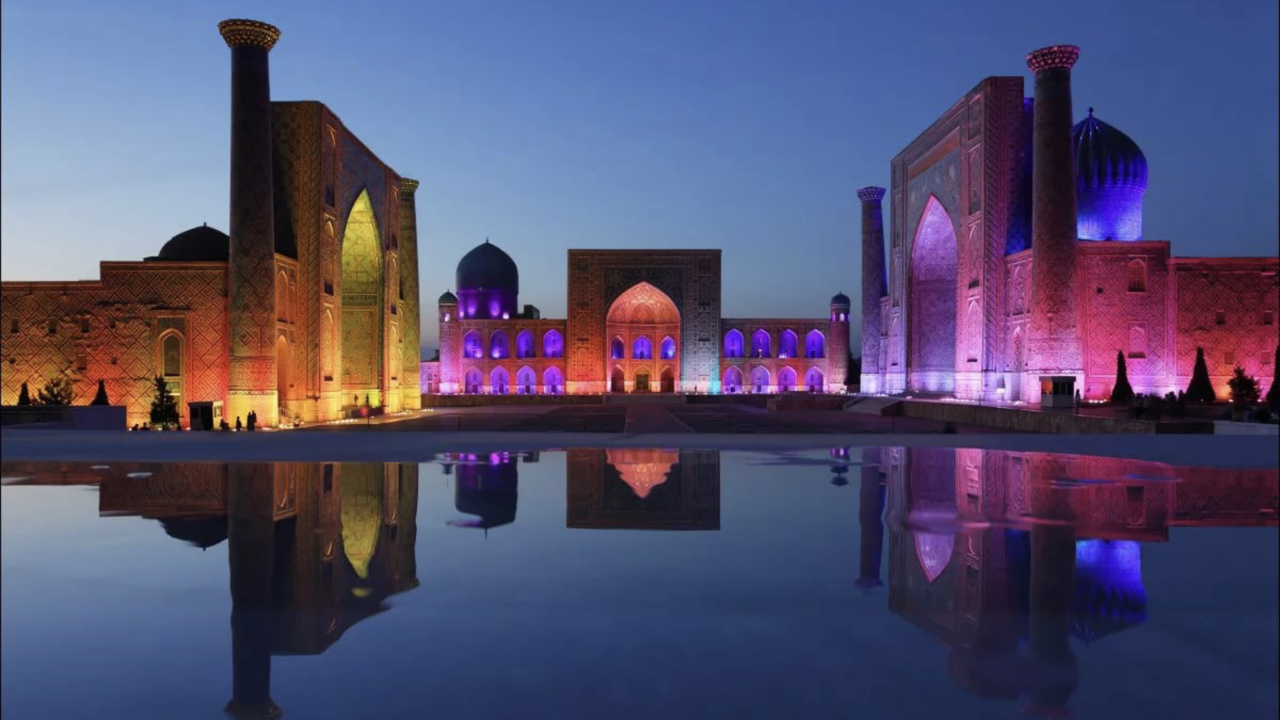The myth of Samarkand might not have been born if its history had not been written by Timur Lenk – the fiercest conqueror in human history, the sword of Islam. His army devastated Asia from Syria and Turkey, to the borders of China, from Moscow to Delhi. Timur Lenk has gone down in history for the ferocity, devastation and massacres.
The myth of Samarkand might not have been born if its history had not been written in part by Tamerlane, the one who made Samarkand the capital of a vast empire.
Born in Samarkand in 1336, Timur Lenk lived for almost seventy years, establishing himself as the fiercest conqueror in human history: his army devastated Asia from Syria and Turkey, to the borders of China, from Moscow to Delhi .
He was the founder of the Timurid dynasty, which ruled in Central Asia and Eastern Persia between 1370 and 1507. Timur Lenk came from the Turkish-Mongolian tribe of the Barlas settled in that region. Having become the head of this clan after getting rid of its leader Hajji Barlas, he defeated the Chagatay family, then ruling Transoxiana under the government of Khwaja Ilyas, in the 1960s, forcing the latter to leave the region in 1364.
In this phase of his rise, Timur Lenk also attributed Mongol descent, thanks to his marriage to a princess of Mongolian lineage, and proclaimed himself the sole ruler of Transoxiana, heir and continuer of Genghis khan.
In the Kuriltay of 1370 Timur Lenk acquired the title of Amir Gurkhan (Universal Commander), already used in the past by the Protomongol dynasty of the Qara Khitai. Having finished the first expansion and definitively established its capital in Samarkand, Tamerlane had begun the conquest of Persia.
It is at this stage that he began his relationship with his perhaps most formidable rival: Toqtamish Khan, lord of the Golden Horde, who appears to have initially used Timur to consolidate his power against the rival clan of the White Horde. then ruled by Urus Khan.
In 1381 Timur Lenk began the invasion of Iran, starting from the eastern region of Khorasan and in particular from the city of Herat, then ruled by the Kartid dynasty. The expansion into Iran continued to the detriment of the local so-called “republic” of the Sarbedar, based in the city of Bayhaq. Contrary to what has often been claimed, the Sarbedar declared themselves vassals of him, and perhaps it was on this occasion that he had the opportunity to meet Khwaja Ali, a Shiite personality of great importance who would have had some influence on him.
The conquest of Iran continued with the aggression on Azerbaijan, then ruled by the ruler Sultan Ahmad, of the Gialairid dynasty. It was at this stage that his plans came into conflict with Toqtamish’s. He too, attracted by the prospect of conquering Azerbaijan, attacked Tabriz which was its capital in 1386 but this triggered one of the three campaigns that Tamerlane made against his rival.
In 1387, Timur Lenk was finally able to attack central Iran, perhaps the main object of his conquests in Persian land. Here he ruled the Muzaffaridi dynasty that was unable to oppose the action of the Chagataean ruler. If the capture of Isfahan in 1387 did not see the resistance of the inhabitants of the city, the massacre that followed was determined by the refusal of the local population to pay tribute or perhaps even by the killing of some soldiers of the guard.
The city of Shiraz was conquered with less violence. Here, after having installed a puppet governor, Timur Lenk put an end to the Persian campaign to return to Samarkand, where yet another attack by Toqtamish awaited him. He was therefore chased up to Siberia but Tamerlane, once again, failed to capture him and returned to Samarkand where in 1390 he again summoned a great Kuriltay.
The years from that event to 1395 are characterized by a campaign of settlement of the domains of northern Iran. Once again, however, the threat of Toqtamish forced him to carry out a long campaign – the last – in the steppes of central Asia and southern Russia. Although he never reached Moscow, as has often been said, this campaign allowed him to get rid of his rival and destroy his capital Saray.
Returning to his homeland, in Samarkand, at the end of the fourteenth century, he undertook a series of campaigns that will remain memorable for the ease with which they were carried out and for the horrendous massacres that he carried out there.
In 1398-1399 it was the turn of India, where the Sultanate of Delhi, sacked and destroyed, would not recover for more than a century. He then touched Syria, where the Mamluks could not prevent the devastation of Aleppo and Damascus (1400-1401), whose craftsmen were deported to Samarkand, and Mesopotamia, where Timur Lenk reduced Baghdad to ruins (1401).
The last great campaign was waged against the Ottomans, the most feared rivals of the Tartar leader.
The figure of Timur Lenk has certainly had extraordinary success in both Eastern and Western literatures. In Europe the fame of the Asian conqueror had already spread, especially after the battle of Angora, favoring the birth of a real literary tradition in which the character assumed titanic traits, also ending up influencing the construction of works such as Il Prince of Niccolò Machiavelli.
A devout Muslim, champion of Sunni orthodoxy, he was nevertheless one of the worst scourges for the Islamic world, which he contributed to undermine and weaken. His death cheered many, including the Arab historian Ibn Arabshah.
Founder of one of the largest empires in the world, he did not bother at any time with the administration of his conquests, merely exploiting them for the needs of war. This explains how, with the loss of his strong personality, the only cohesive factor of domains so distant from each other and lacking in unitary cultural traditions, his construction was rapidly disintegrating without leaving a lasting trace.
Timur Lenk has gone down in history for the ferocity, devastation and massacres that accompanied his exploits: aspects that inevitably relegated to the background the attitude of enlightened patron he had towards the artists and intellectuals of his time and which resulted determining factor for the artistic and cultural development of Samarkand.
This article has been originally published on anews.se by the same author: Tommy Olovsson
Image: Jama sadikov









